Zeiss APO Sonnar 135mm f/2 (ZF.2) Review
MTF:
Looking at the MTF chart above we can notice one interesting lens behavior. While at f/2 both Sagital and Tangential lines are keeping close together (indicating low CA), at f/4 they gets apart toward the edges.
On the other hand, considering that those charts are result of real life measuring, it is amazing to see how even contrast and resolution are kept across the frame straight from f/2. By stopping lens down to f/4 we can notice increase of resolution while contrast shows only light boost. Considering that at R10 lens achieve over 95% MTF in almost entire projection and that even at R40 it never really drops bellow 60%, we should be ready to witness breathtaking sharpness in a real life. Razor sharp can’t look much better than this according to this results.
Vignetting and Distortion:
At wide open aperture lens shows some light fall off toward edges (approx. 2/3rd of EV) but good thing is that vignetting is very linear so you should not notice transition areas. Stopped down to f/2.8 drastically improves performance and at f/4 vignetting becomes non issue. Distortion is hardly noticeable which is to be expected from high quality 135mm lens.
Let’s take a look how those data manifests visually.
(In this review I used Nikon D800E to test the lens, which is probably not the best option because of possible shutter shake issues, but I shot in LCD – mirror up mode with shutter delay. I will also make shoot out with Sony A7 camera that has EFC, just to be sure.)
This is test chart and red squares indicate respective zones of 100% crops that will follow.
Here are 100% crops of respective zones at aperture stops from left to right – f/2, f/2.8, f/4, f/5.6
and from f/8 to f/22
By clicking on those images you should be able to open them to original size, where each presented crop (zone) is shown at pixel level of 800x600px. If you prefer to look at original size files, you should find them all on my Flickr Service Album – Nikon D800E + Zeiss APO Sonnar 135mm f/2 ZF.2
Visually judging contrast and resolution of this lens is unique experience IMHO. Just as MTF results suggest, lens is sharp from f/2 up to the extreme corners. Both resolution and contrast are probably highest that I have ever seen in my tests. Stopping lens down improves sharpness further up to f/5.6 (at pixel level), but this is one of the rare lenses that I would probably feel confident to use wide open even for the landscape shots (if I ever experience the need to do so). Simply outstanding results.
Diffraction starts to affect resolution (start to be notable at a pixel level) from f/8 on and considering how clean and crisp image is at f/5.6, I would consider this f-stop to be optimal for the lens (unless you need extreme DOF).
Here are few comparisons between apertures for your consideration, but don’t forget that you are looking at basically unprocessed RAW files (just standard processing in LR 5.7 without applied lens profiles of course) at pixel level.
f/2 vs f/5.6 – sharpness zone
And f/8 vs f/22 – Diffraction zone
While f/5.6 might look much better than f/2 and f/22 might look unusable, I would say that this lens is perfectly fine at all apertures varying from insanely good to great or very good. I would like to know if there is theoretical (or real life tested) maximum resolution for this lens, because I believe that it can easily out resolve recently announced 50mpx and up sensors.
Let’s make it simple – this is sharpest lens that I have tested in person so far (I still have to find time for Otus line and Sigma Art).
However, for the price balancing at 2000 USD edge, it is to be expected, considering Zeiss experience and knowledge, but…
On the other side of our gray (formerly known as blue) planet, more precisely in South Korea, company that I first heard about related to lens business just few years ago, originally named Samyang (but also known under many other private label brands – Bower, Rokinon e.g.), planted on the market few great lenses especially considering price/performance ratio.
I remember than when I bought my first Samyang lens – 14mm f/2.8 and I went out with my photo friends, they looked at me with compassion as to someone who can’t afford quality optics. One of them wasn’t able to remember the producer name for the whole weekend, calling it all possible variations such as Samtex, Pingpong etc. so it ended with a nice and simple nick – Sam.
When they saw results however, many of them went with Sam and are happily shooting all around.
Samyang lenses are not sexy, they don’t have 3D pop neither 4D corn, built quality is functional at best and QC in Korean probably means Quantifying capitalization, but who ever was responsible for development of already mentioned 14mm/2.8, 35mm/1.4, 85mm f/1.4 or APS-C line (12/2, 16/2.8, 8/2.8 fisheye) is or are very, very talented optician.
Why so much writing about Samyang?
First I really think they deserve more publicity and second, they just introduced new 135mm f/2 on the market and first shy reviews were almost all raving.
Their (theoretical) MTF looks quite amazing and surprisingly similar to Zeiss but it is measured at R10 and R30 while Zeiss is at R10 and R20, but most importantly, Zeiss results (above) are real life tests, while Samyang is theoretical.
(Theoretical MTF basically mean, that as many other producers, Samyang shows the result that would apply to ideal conditions – vacuum, 100% even illumination, perfectly crafted and assembled lens, honest politicians, etc. In comparison to the real life test, theoretical (or computerized) is similar to what I expected my life to be when I was 6 y.o. and what it is in reality today. Or there about…)
Well dear Zeiss APO Sonnar (every word in its lens name sounds pricey don’t you think :-)), it seems that you won’t have easy life…
Seriously though, I had to buy Samyang lens from UK in order to get it for this review, but it cost me 500 USD, so almost 4 time less than Zeiss price point.
Challenge was born, but I decided to include also one of my favorite 135mm lenses in the contest – Oldie but Goldie Nikkor 135mm f/2 AF DC.
All tests were performed using Nikon D800E (Studio tripod, laser aligning, professional target, even permanent illumination etc.)
Following comparison zone crops are related to the same zones listed above, but I am posting it here once more, so that you don’t have to scroll up and down.
To use our slider comparison tool, click and hold with cursor on the circle with arrows in the middle of the image and move it left or right to reveal image bellow. Color bars on the top with lens name and tested aperture, as well with zones listed from left to right and from top to bottom, should help you in orientation.
1. Zeiss APO Sonnar 135mm f/2 ZF.2 vs Samyang 135mm f/2 ED UMC ZF.2
f/2
f/2.8
f/4
f/8
In this Test chart comparison, shot from a close distance of about 1.5m, Zeiss is winner at all apertures. But in real life tests at medium and long distances, Samyang often surpassed Zeiss in center sharpness. Different focus plane optimization?
Beside differences in sharpness, you might notice different rendering of white/gray color. While Zeiss is neutral, Samyang has quite strong shift toward warm tones. This proved to be true in a real life as you will see in the following parts of the review – difference is quite significant in that regard.
Finally, while aligning test chart I noticed that Samyang has somewhat wider FOV than Zeiss and Nikkor.
If you want to see original size files, they are available on my Flickr Service Albums:
But don’t be fooled, Samyang still performs well wide open when compared with older Nikkor e.g.
And I am not talking about lack of CA, we will come to this later…
2. Zeiss APO Sonnar 135mm f/2 ZF.2 vs Nikkor 135mm f/2 AF DC (DC set to neutral)
f/2
f/2.8
f/4
f/8
You can find original size Nikkor files by clicking here.
There is no doubt that Zeiss APO Sonnar in this studio test is a clear winner. However even if I would stop review here, I can still see many reasons to go with other two lenses, because their performance is still very good. I am not worried about Samyang center sharpness result here, because in a real life situations it often surpassed Zeiss in the center, but extreme corners could be a tad better. On the other hand, if you look carefully to those crops, you might notice a very tinny bit of persisting purple fringing in Zeiss APO Sonnar samples, while Samyang is absolutely CA free in my eyes, despite lacking fancy APO sign.
Nikkor despite its age is still capable of excellent results, beside very strong purple fringing wide open. Stopped down to just f/2.8 cures most of it and Nikkors power is hidden in DC feature, allowing it to create very smooth foreground/background blurriness and dreamy softness on the subject at the same time.
But yeah… Zeiss wins this one!
Please help support this page and upcoming reviews and buy through affiliate links, with no extra cost for you:
Buy on BHPhoto: 135mm f/2 Apo Sonnar T* ZF.2 Lens for Nikon F Mount
Buy on Adorama: 135mm f/2 Apo Sonnar T* ZF.2 Lens for Nikon F Mount
Buy on Amazon: 135mm f/2 Apo Sonnar T* ZF.2 Lens for Nikon F Mount BEST OFFER!
To help this page survive, your donation will be highly appreciated.
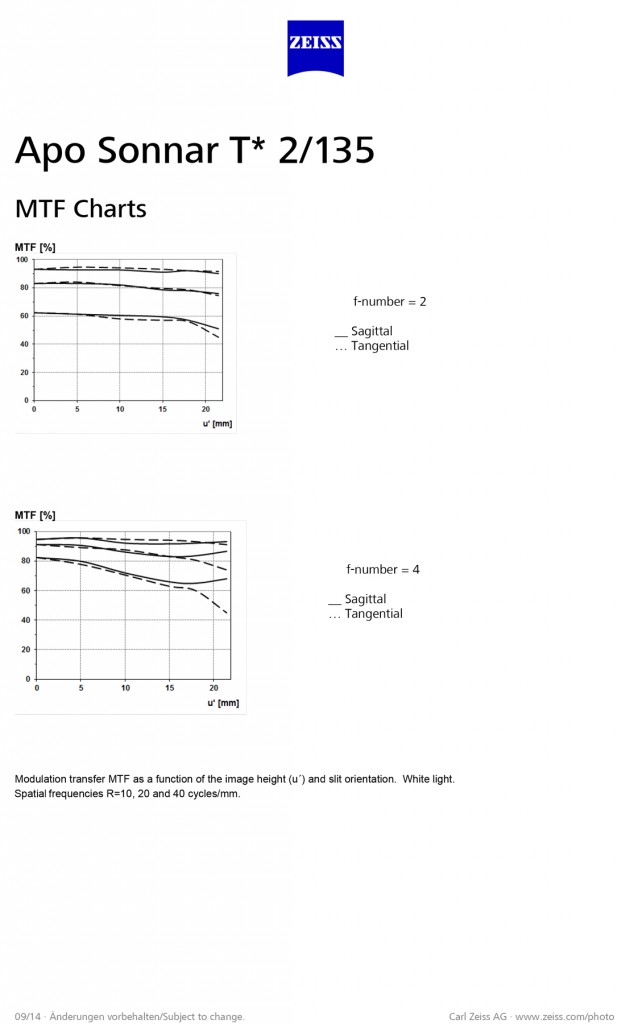
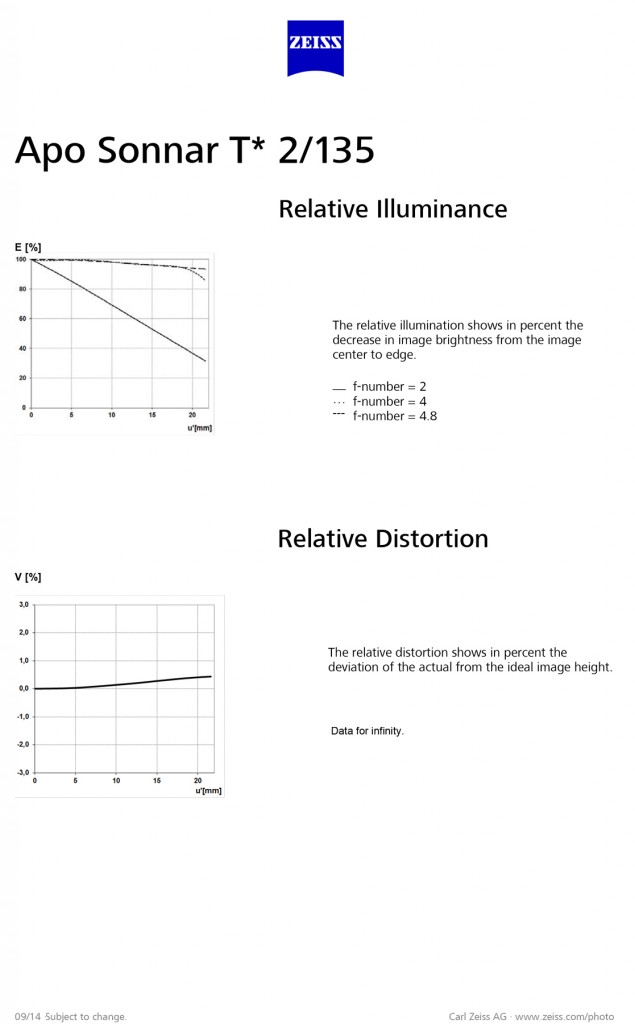
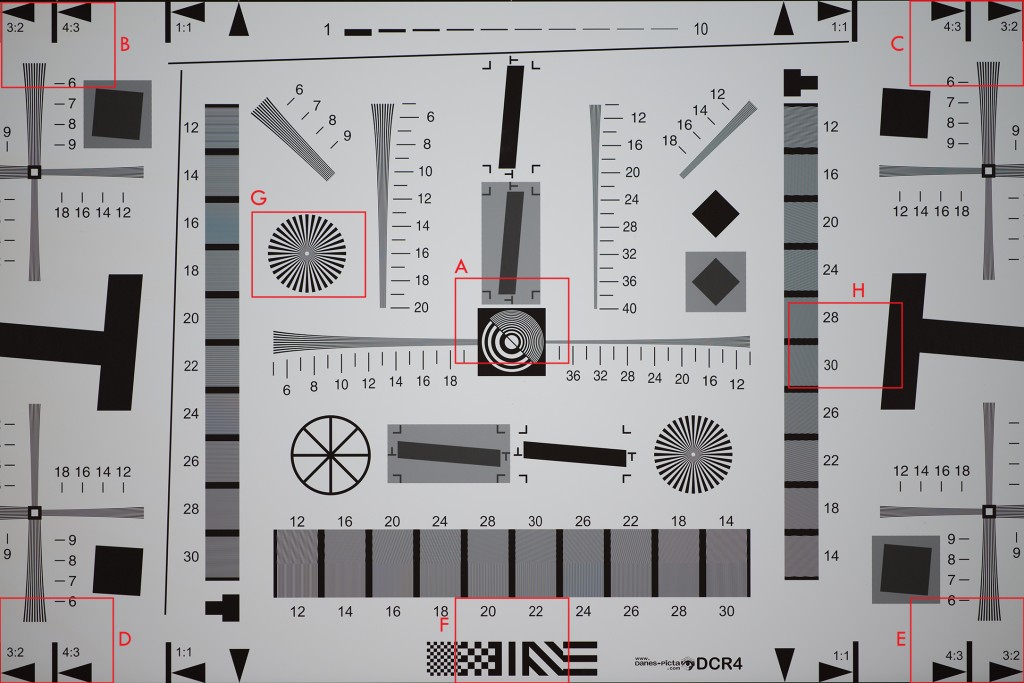
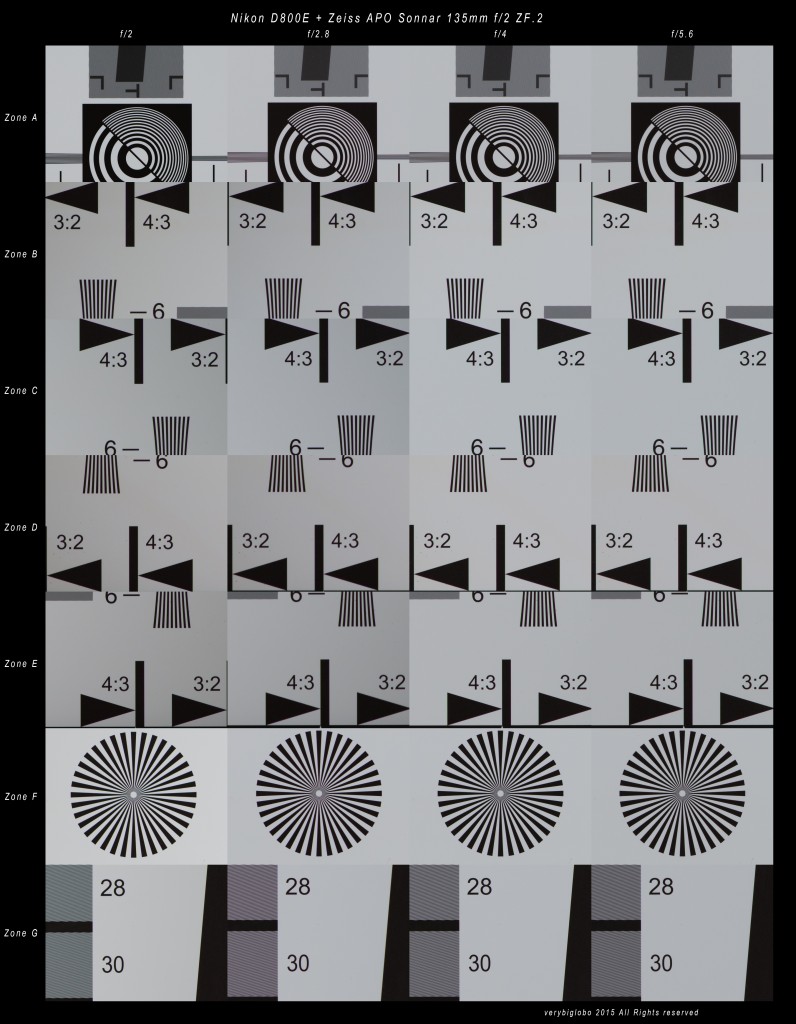
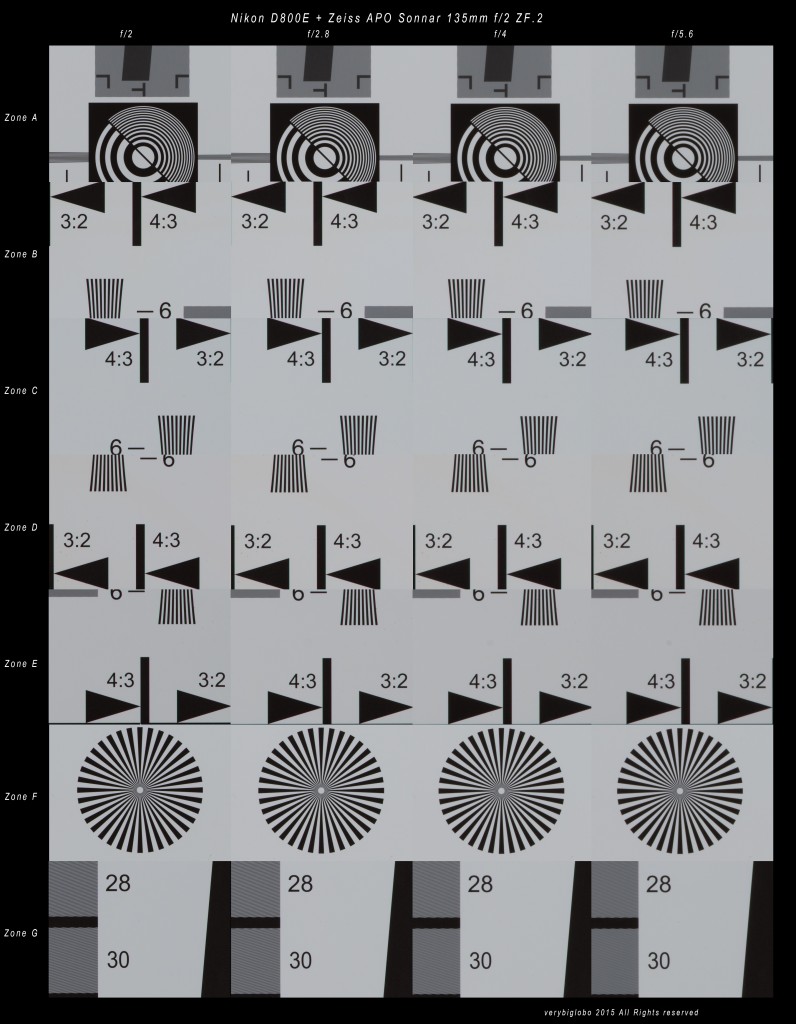
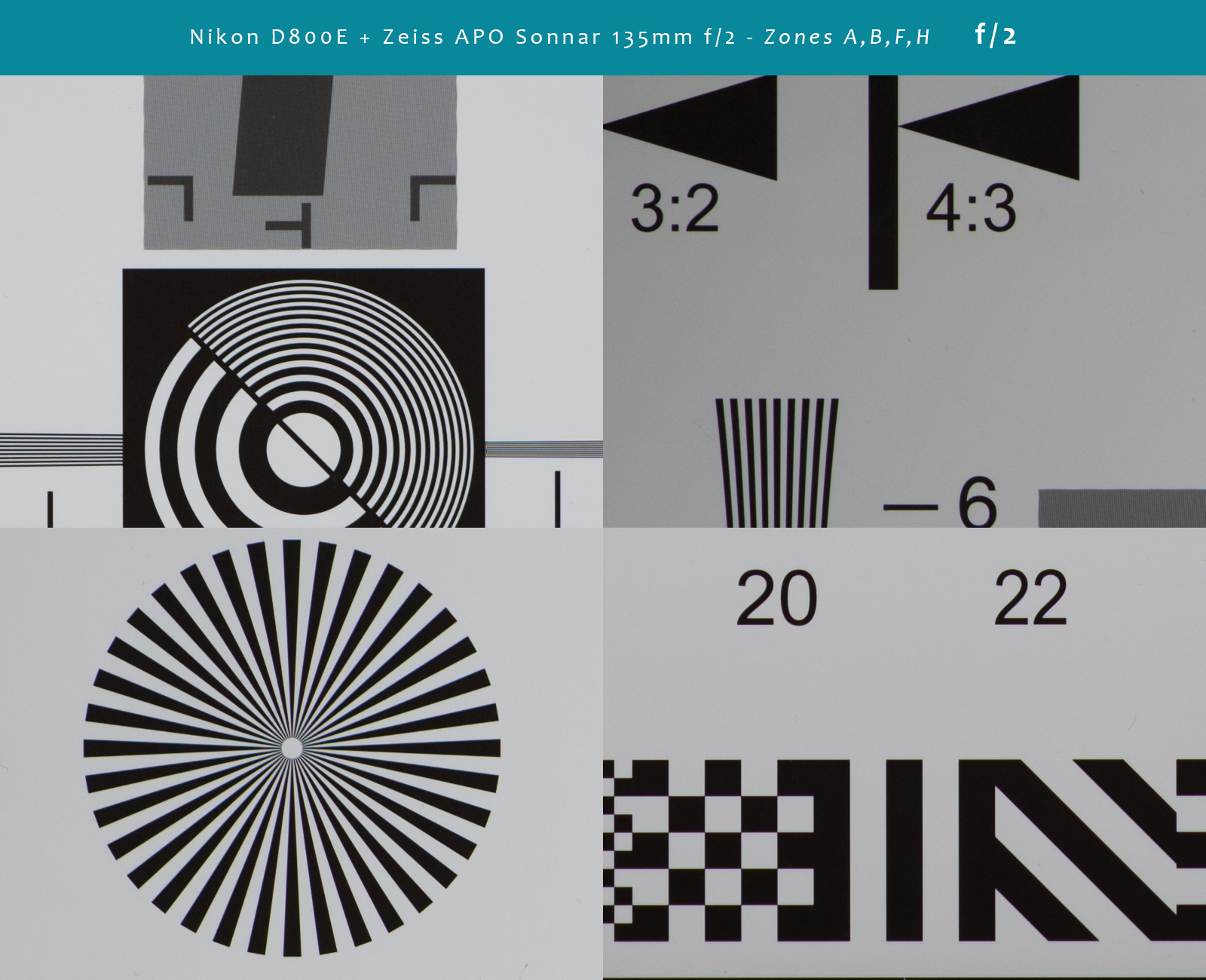
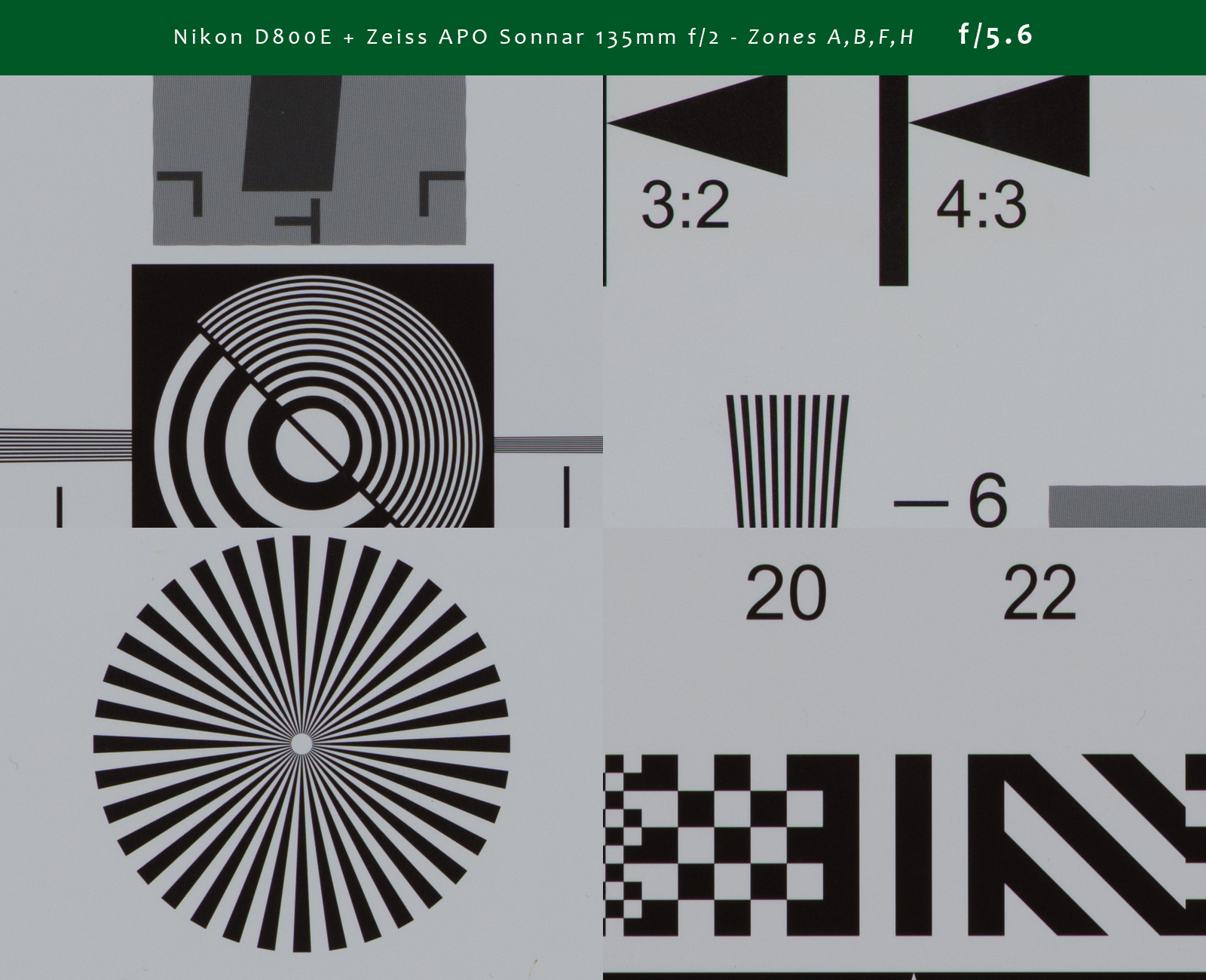
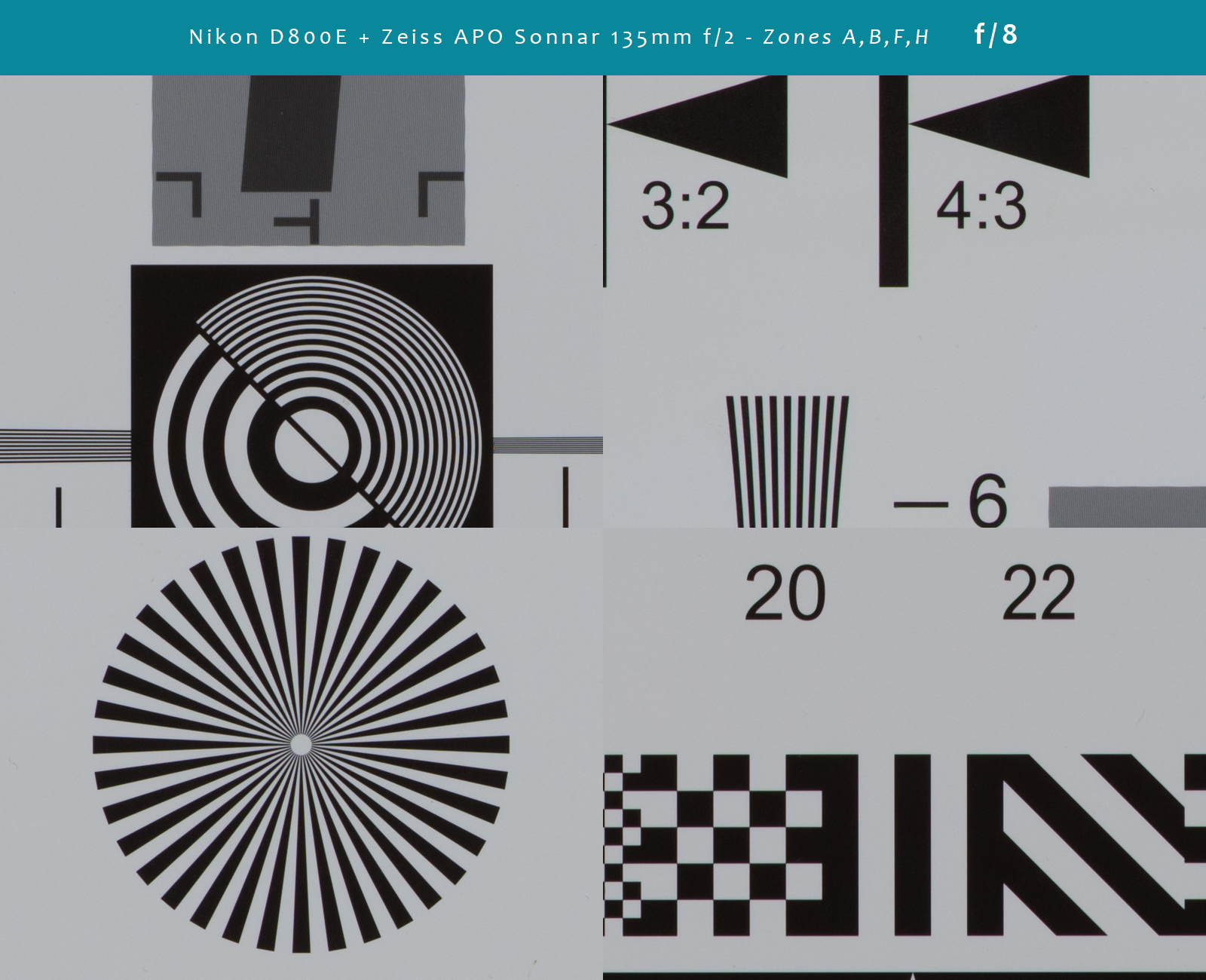
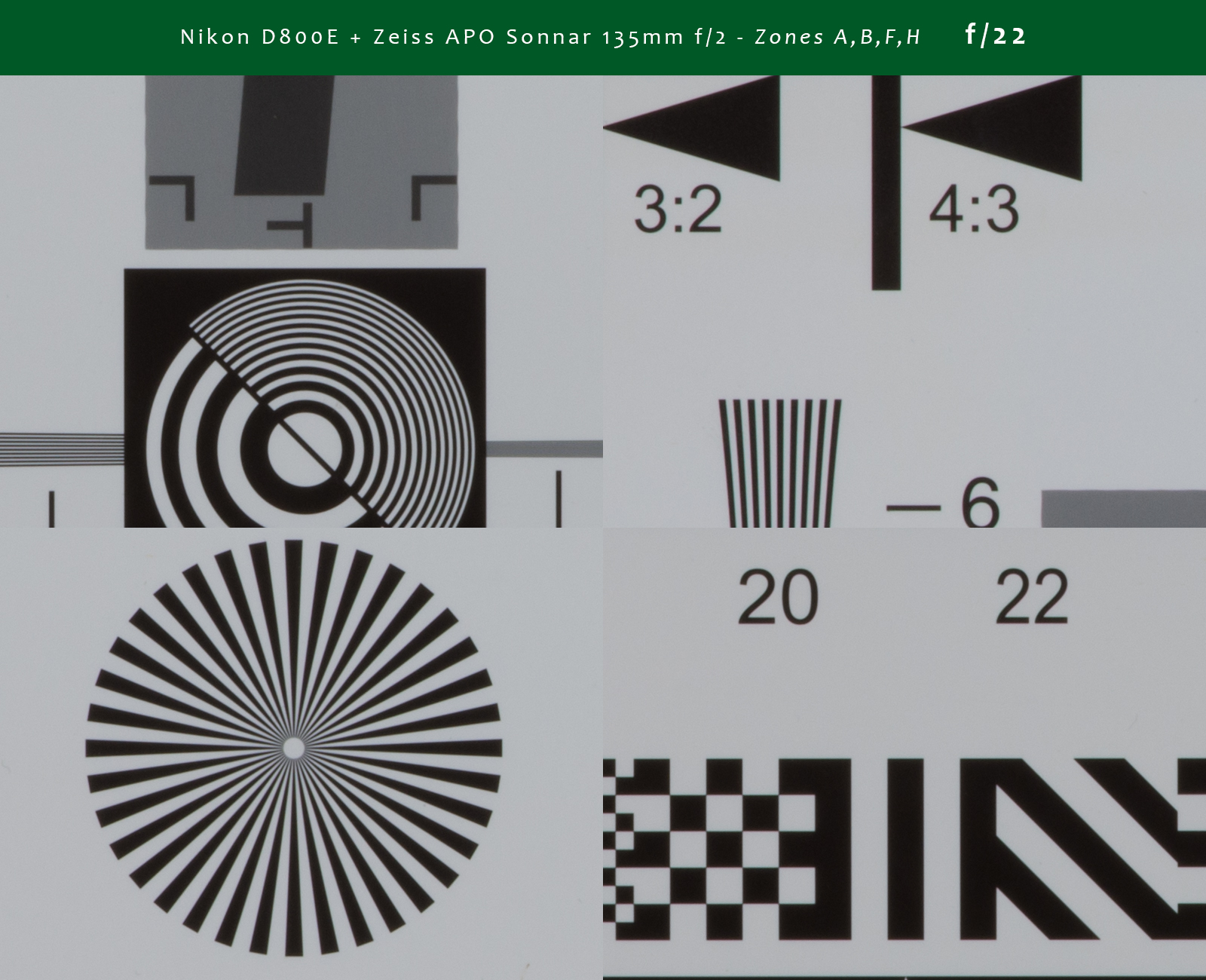
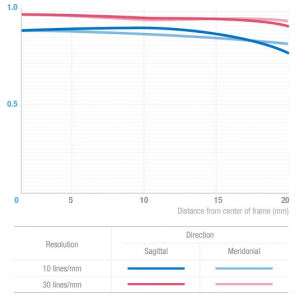
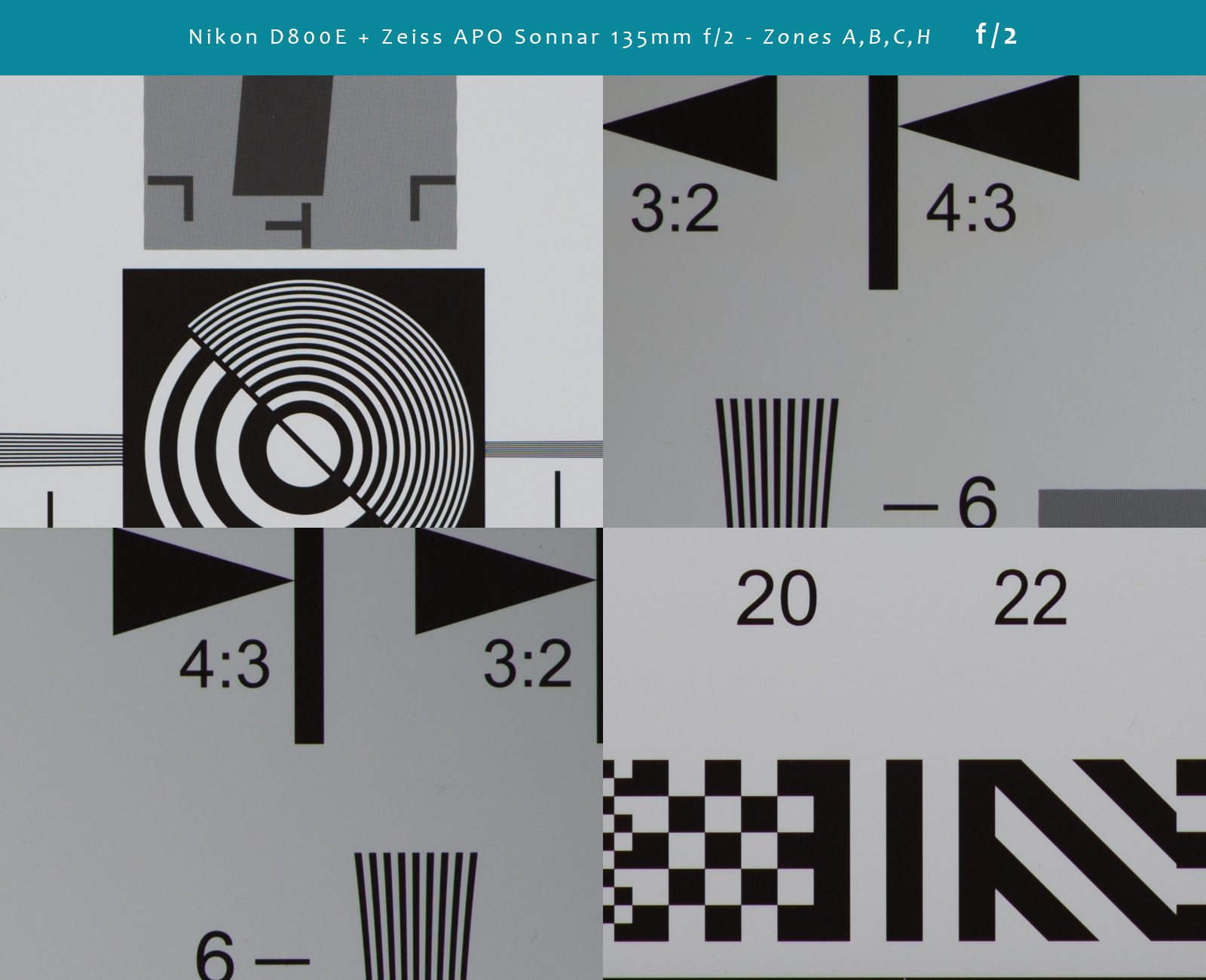
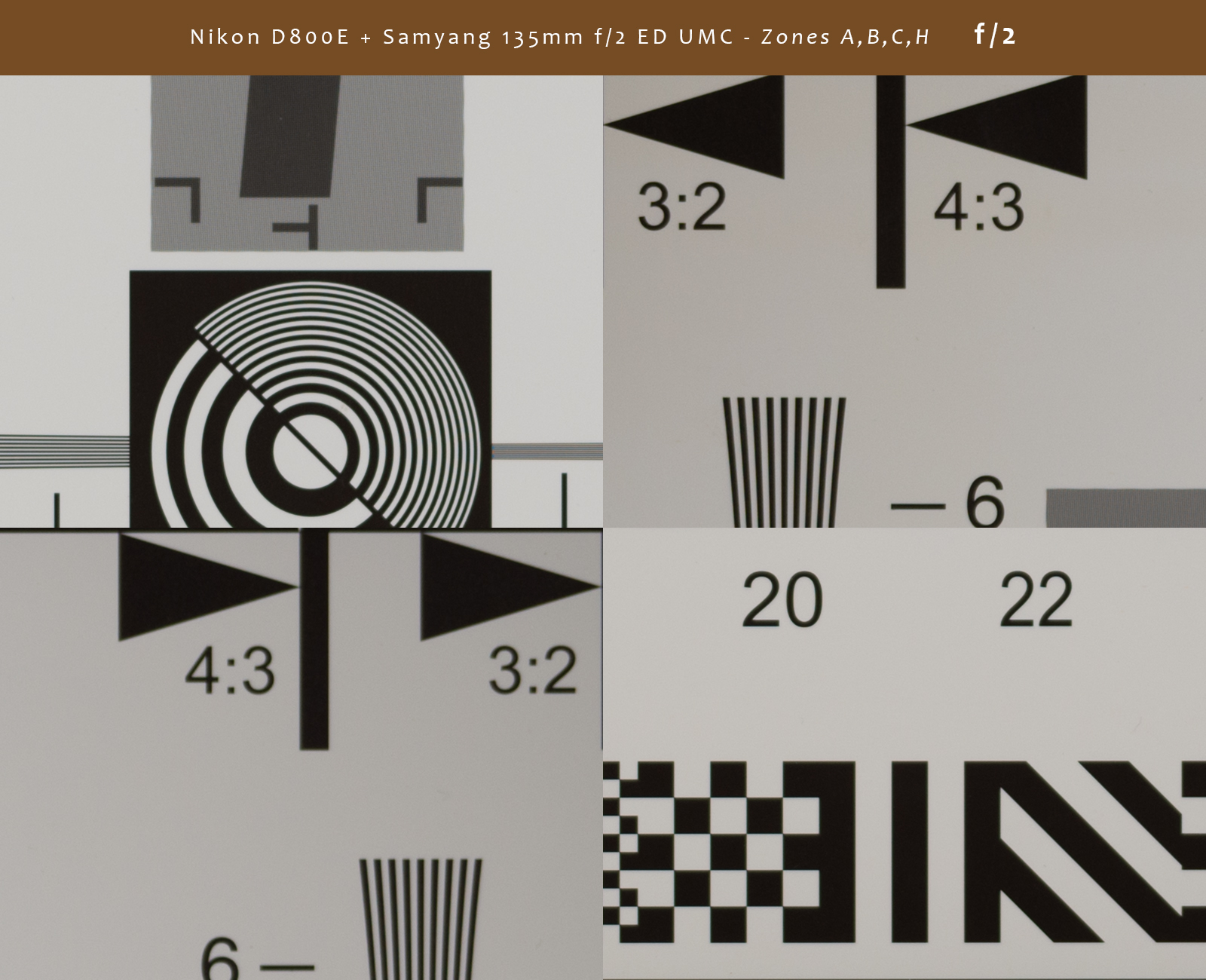
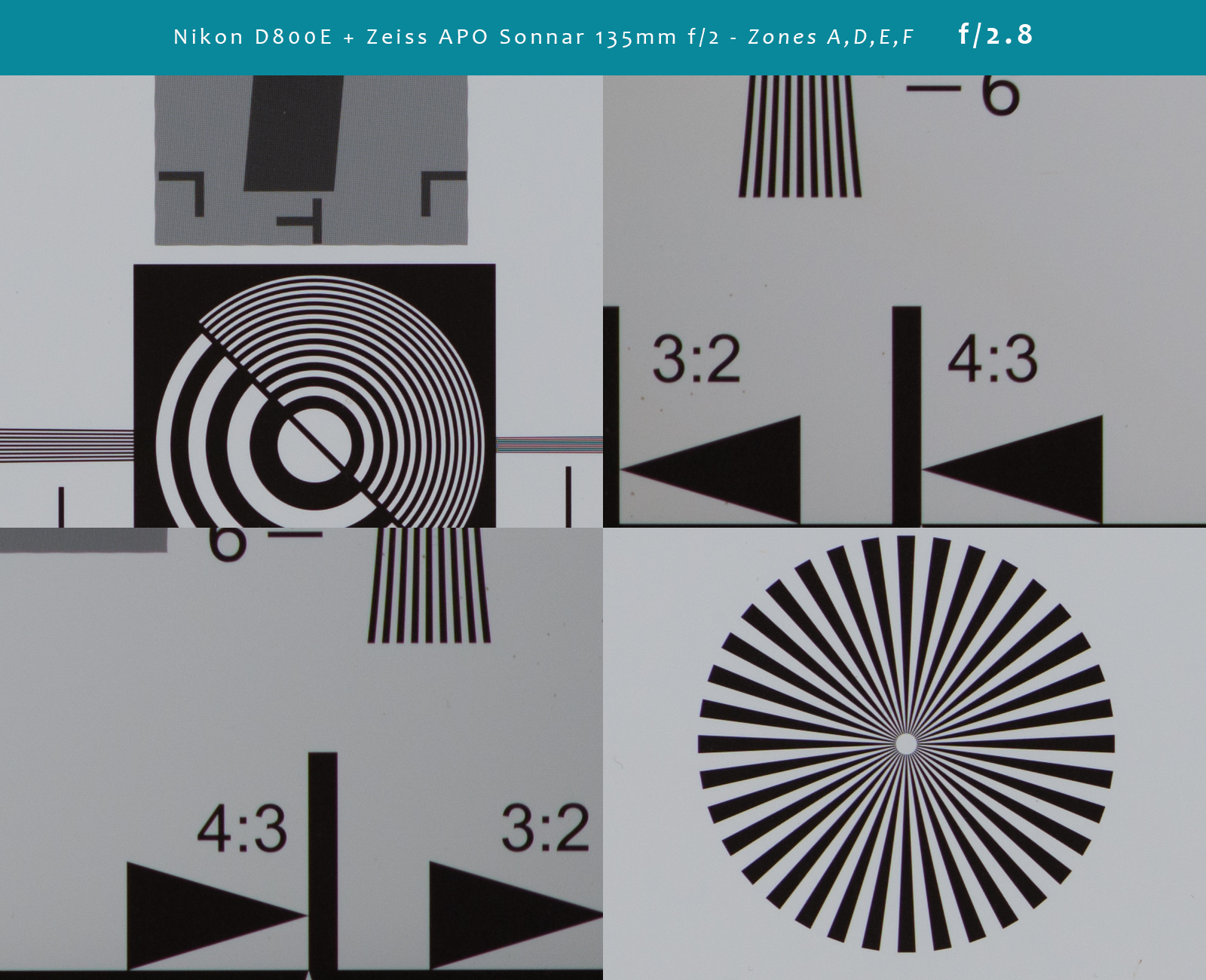
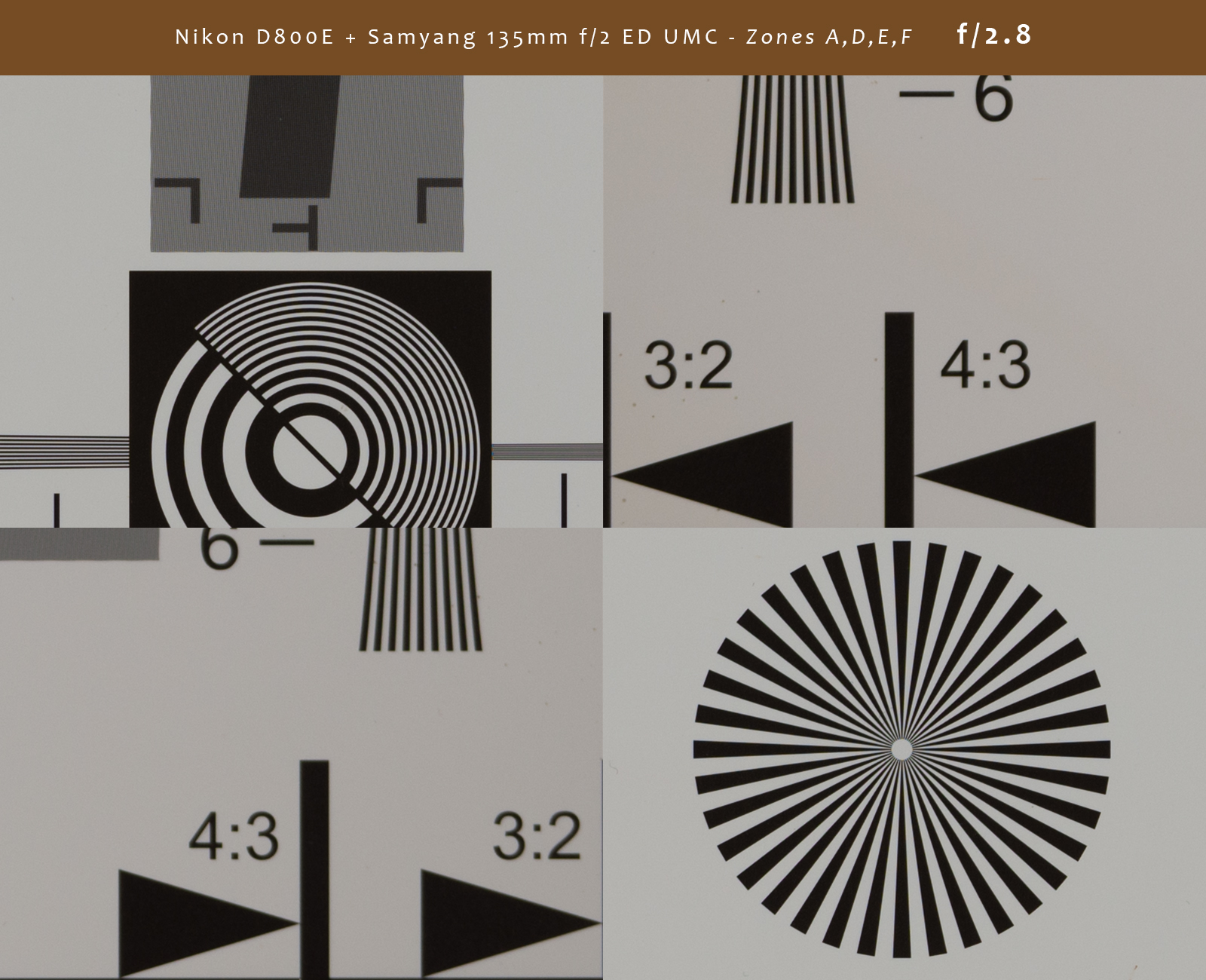
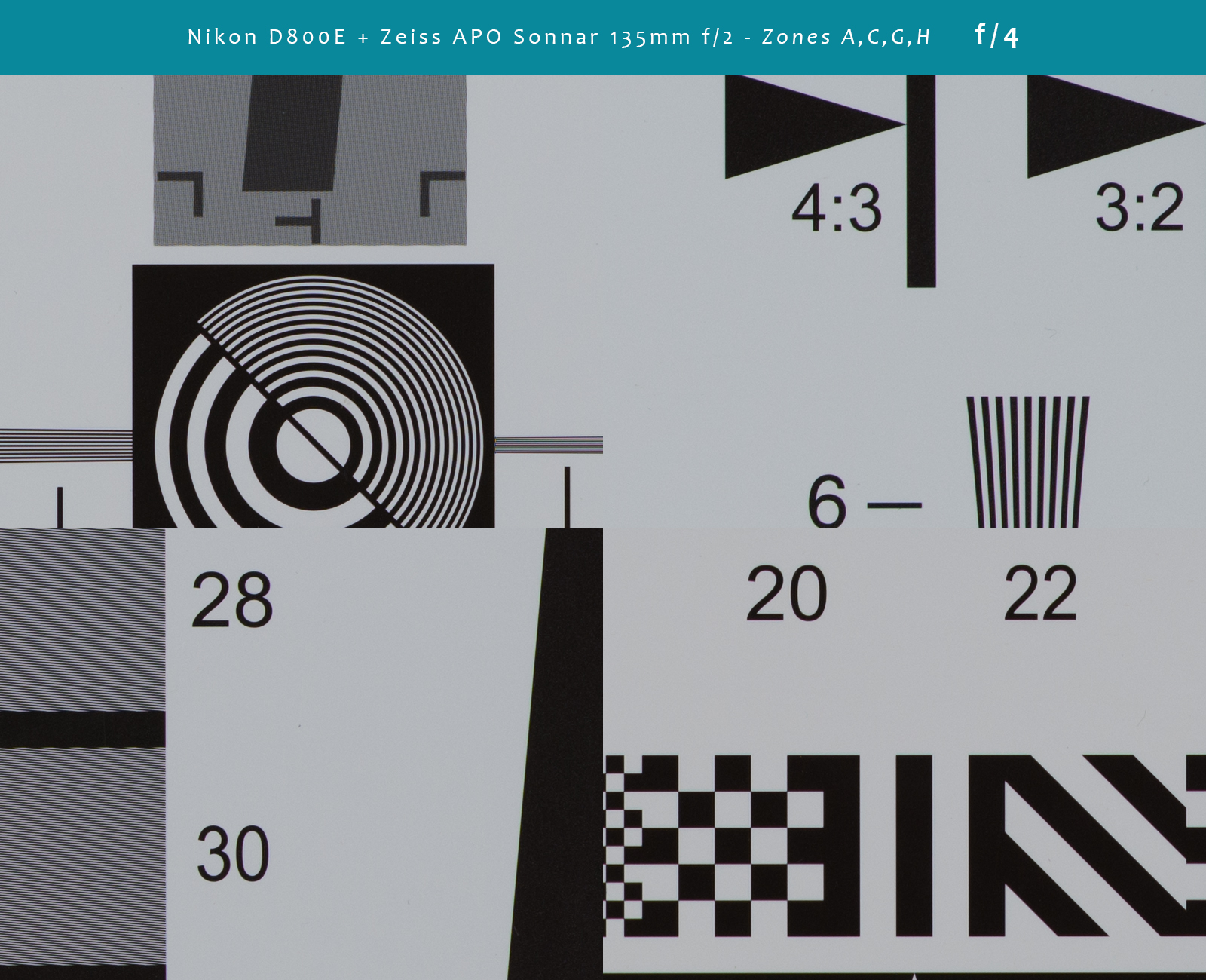
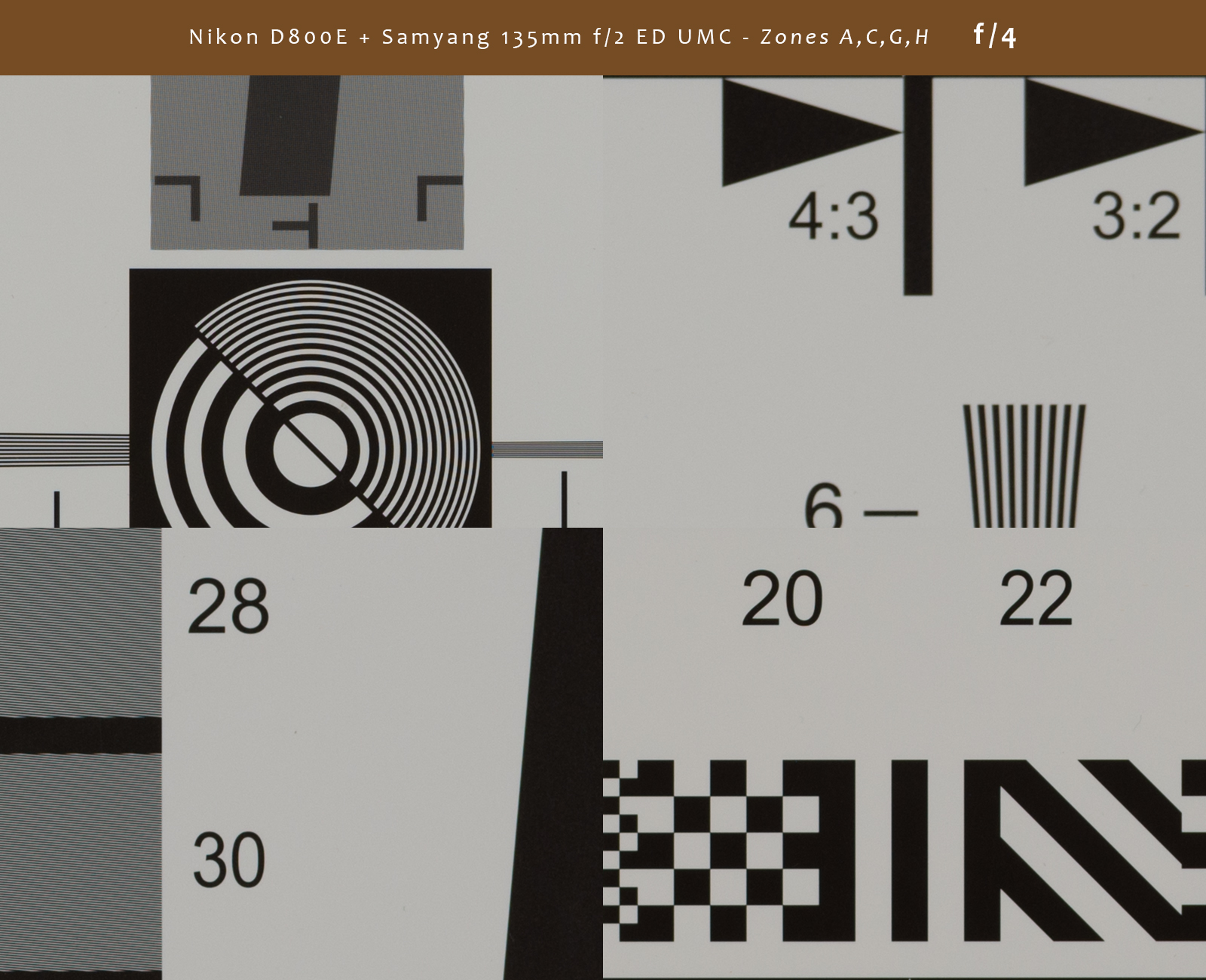
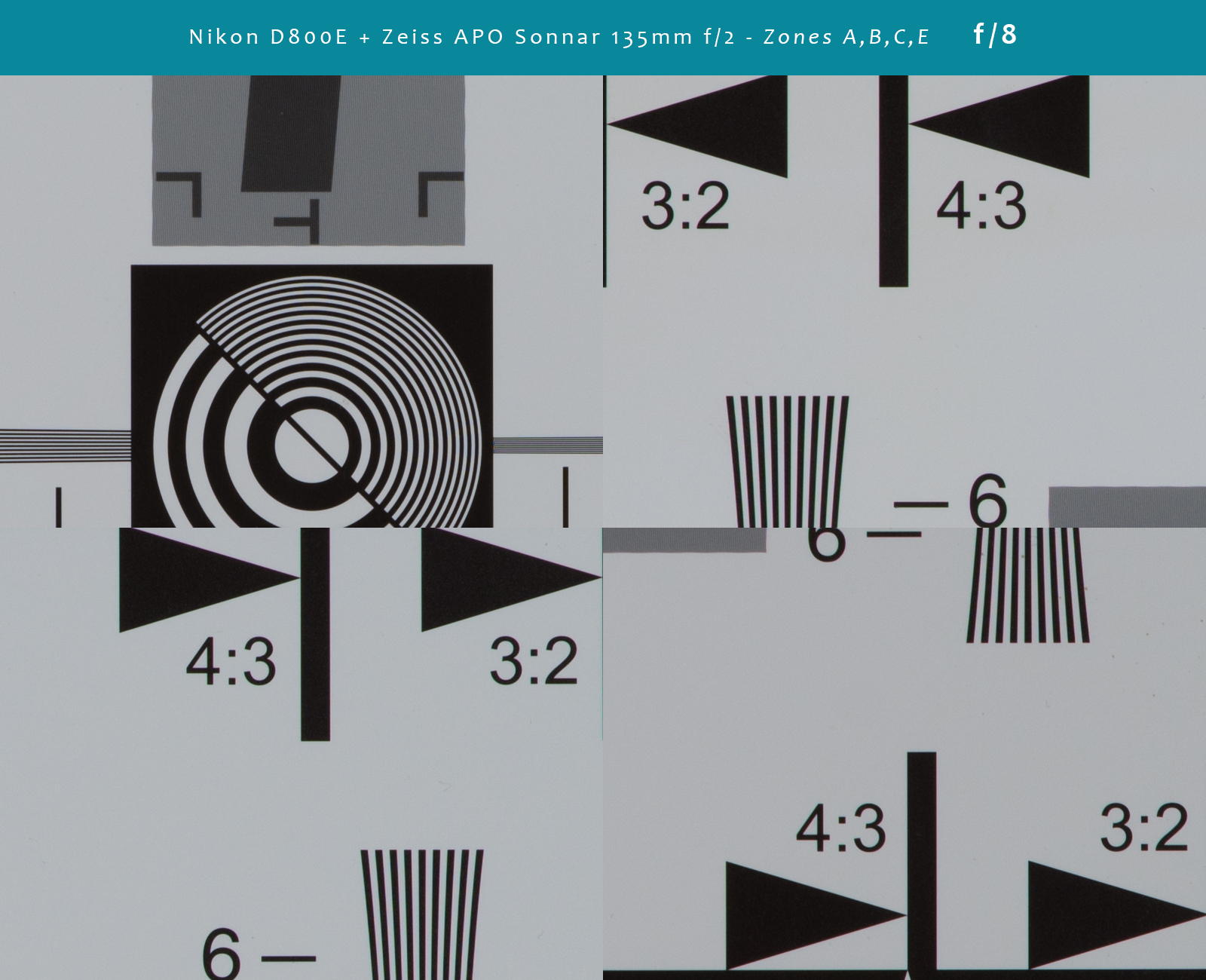
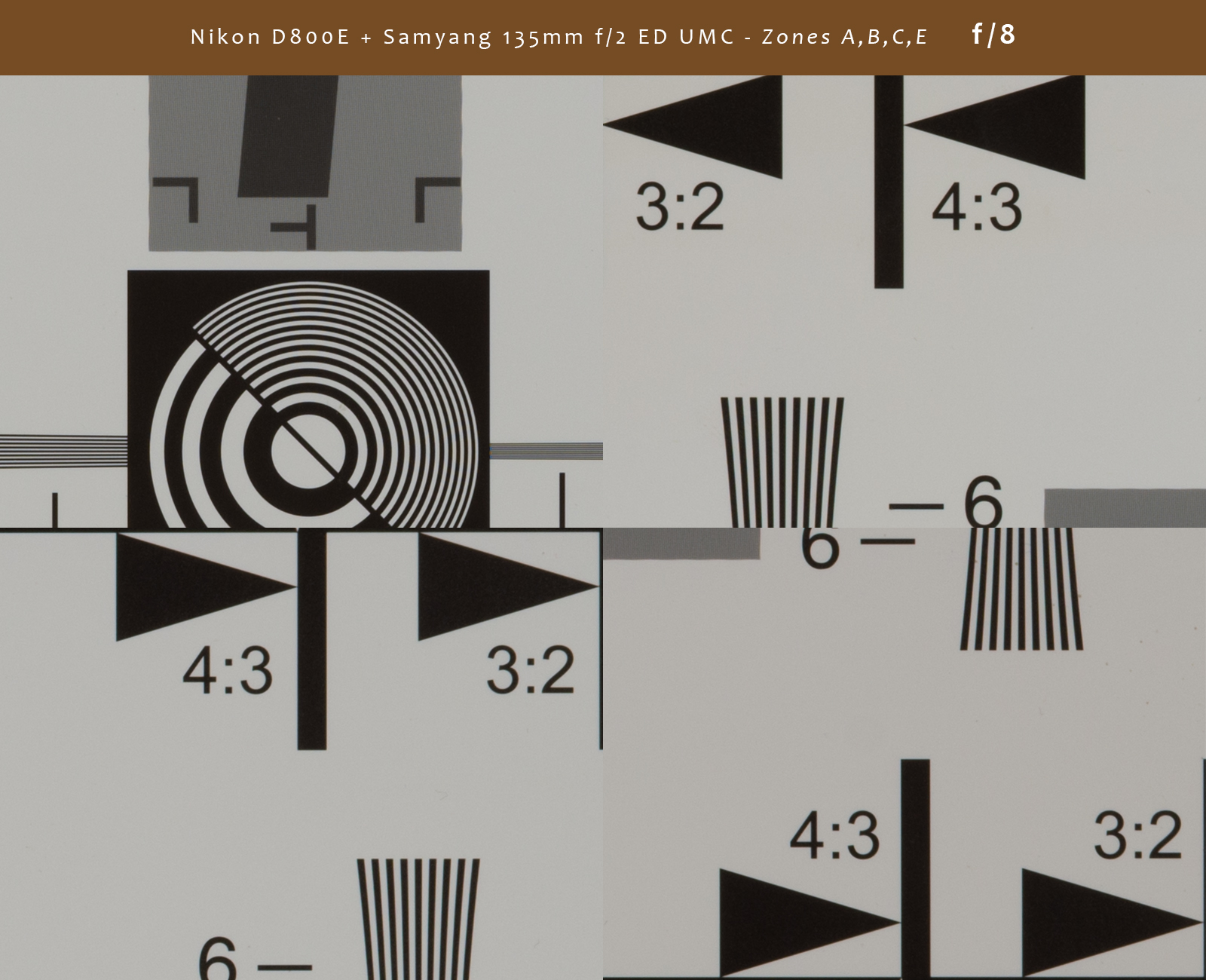
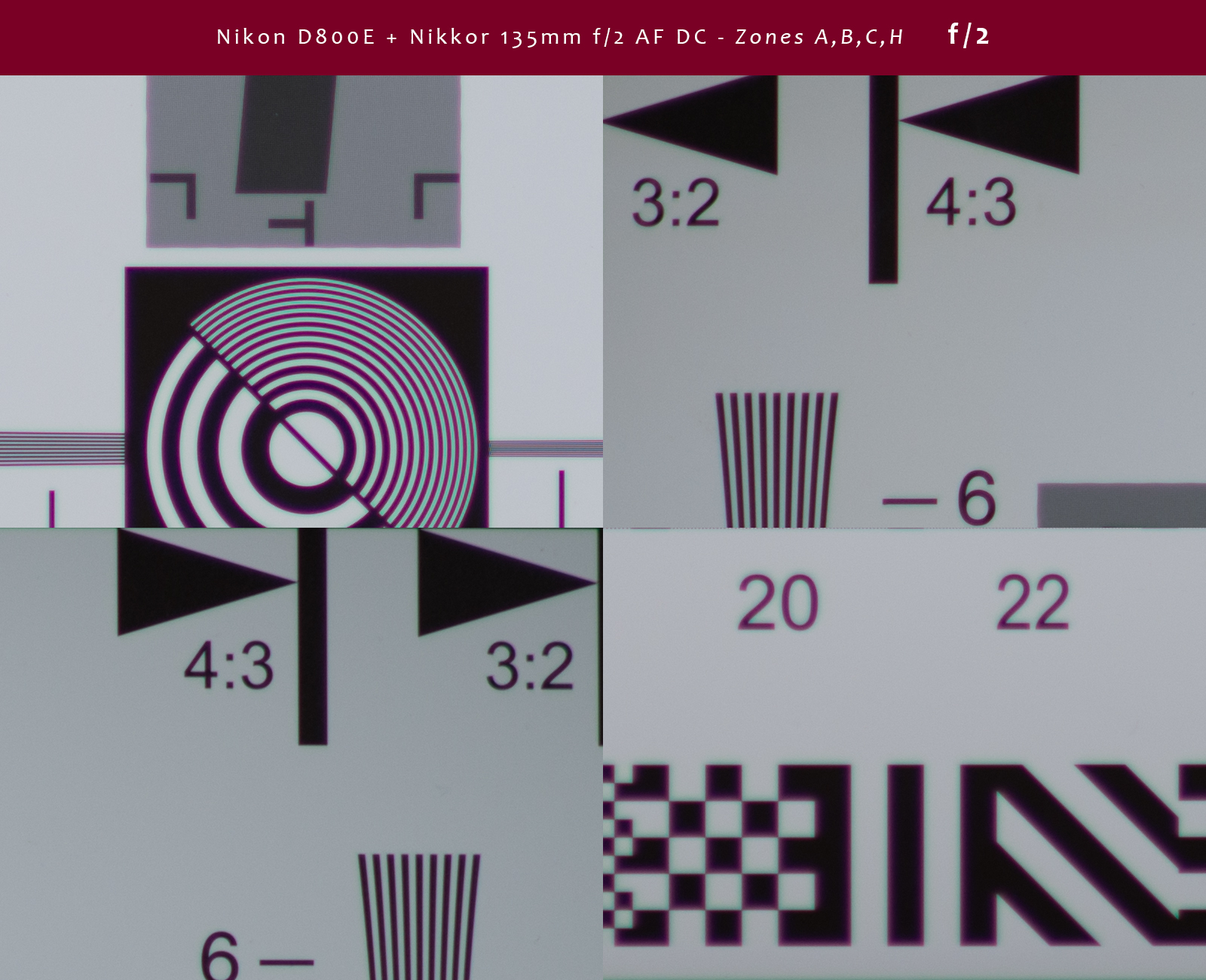
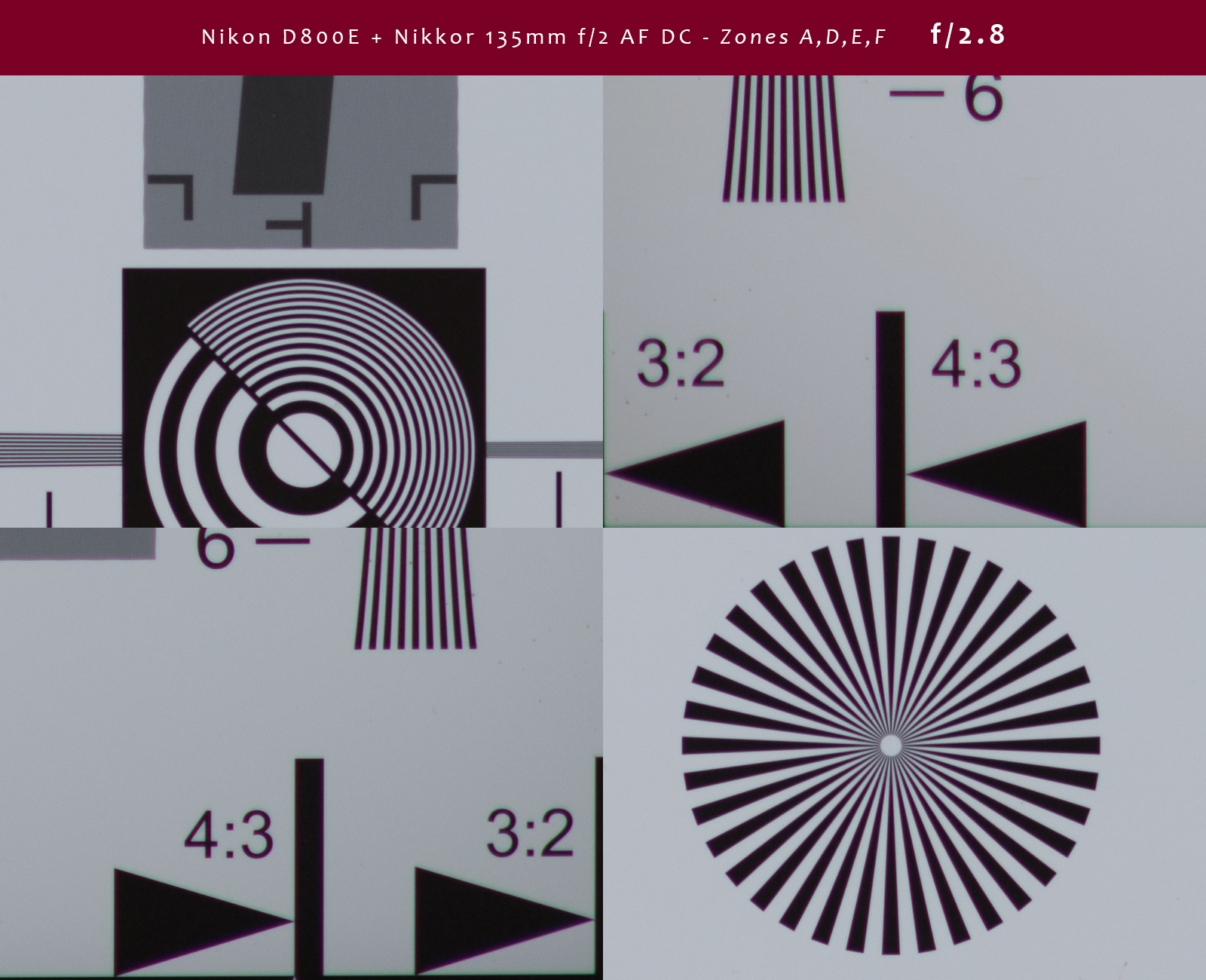
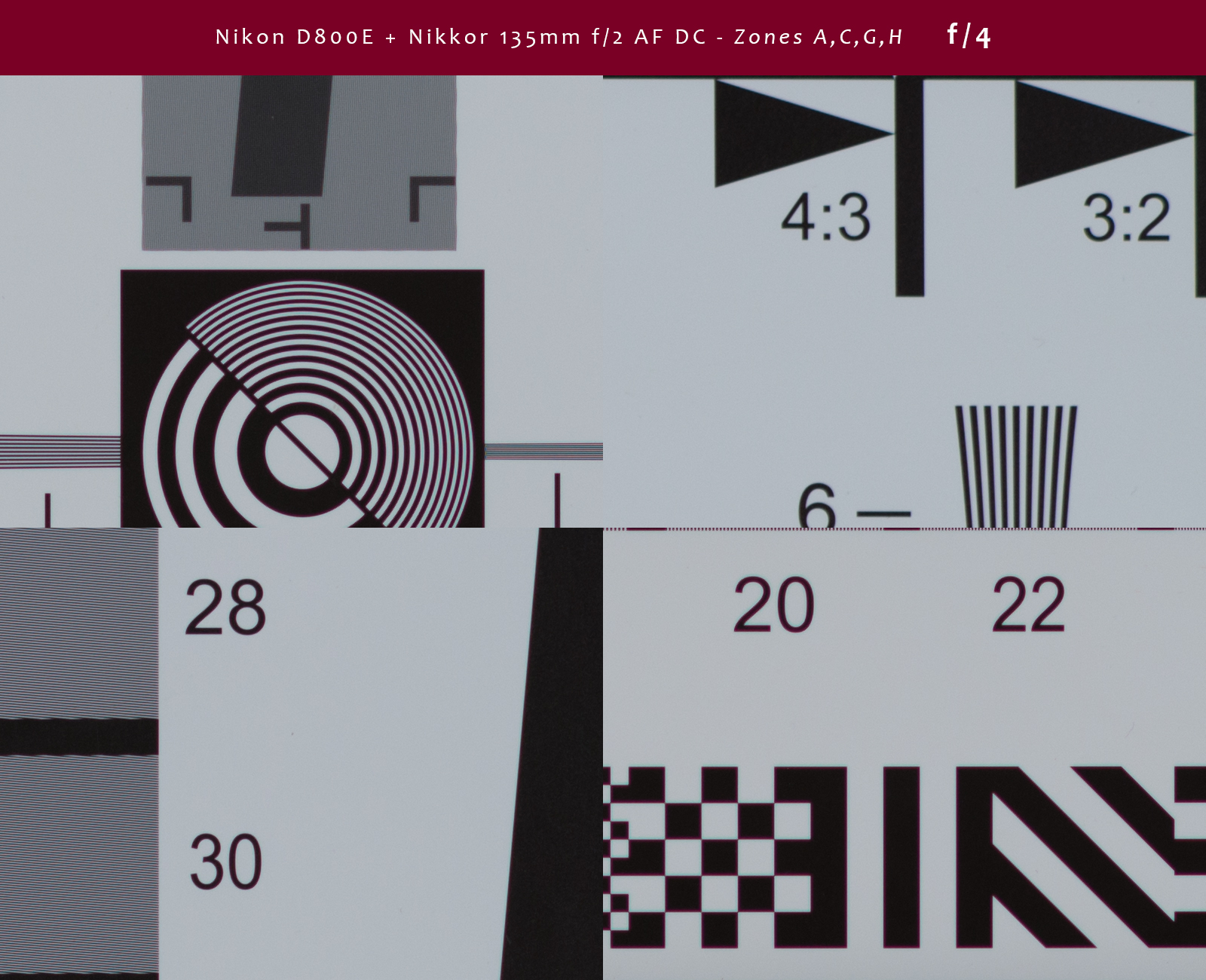
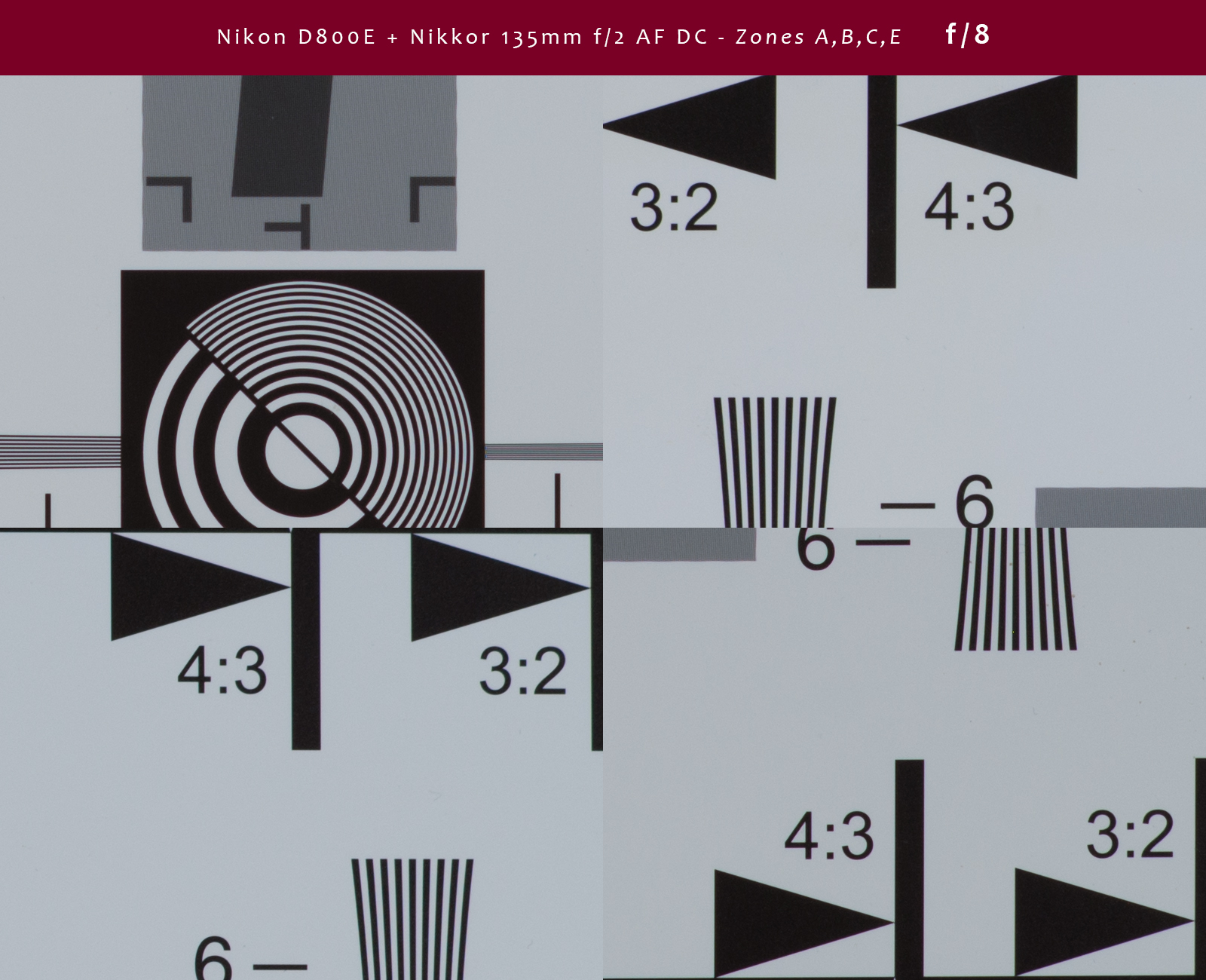
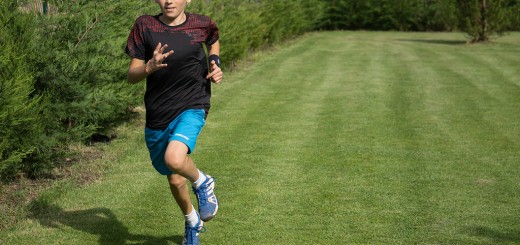
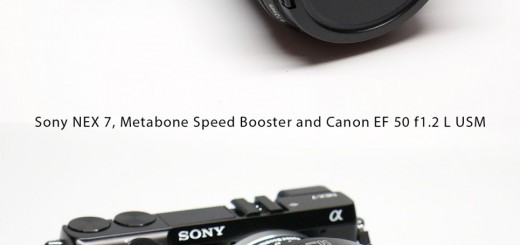
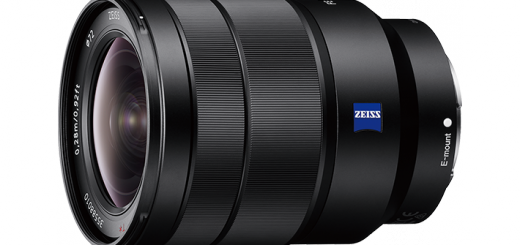













Hi. Was just curious as to which D/SLR would be suitable (not at fault regarding precise focus) at achieving critical focus with the Ziess 135mm f2 manual focus lens wide open, with its shallow depth of field. quickly without viewing aids. Especially do to my weakening eyesight as I age. For I do appreciate fine quality, but only when practical. Dennis
Hi Dennis,
using manual focus lenses with recent DSLR cameras is very tricky… There are some after market split screens such as – http://www.focusingscreen.com/work/d800en.htm
but using it will probably cause lot of troubles related to exposure or super imposed information in viewfinder.
Another option would be to use rear LCD with a hoodman or similar loupe and camera in live view mode (similar as it is used by videographers). In that respect I would suggest recent Nikon flagships such as D810 and D750 because they are using higher quality/resolution screens.
You can of course use mirrorless cameras such as Sony A7 series, if you don’t mind lack of EXIF, iTTL and compressed RAW.
I have solid success in using my regular viewfinder with DH17 magnifier view-piece and rubber eyepiece.
Initial focusing is just a part of the problem though, because DOF is so thin, that slightest movement of you or yours model will result in blur, especially at pixel level. There are nice software tools recently for repair of small motion blur such as shake reduction in photoshop CC or piccure + e.g.
Finally, it’s also about technique that will best suits your shooting style. I tend to use high speed drive mode (3-4 frames per second) whenever possible. When acquiring critical focus (or what I believe it should be) I take deep breath (which moves me slightly backward), fire the shutter and keep blowing the air out (which moves me slightly forward). At SS from 1/200s and faster I usually manage to have 1-2 sharp images in the series.
Cheers,
Viktor
One of the best reviews i ever read, much better than any done with in lab measurements. The Zeiss is not for me, i came here searching for reviews of the Samyang 135/2, which i now own (my 5th Samyang).
Keep the excellent work going!
Tomas
http://www.pbase.com/tomasg_71
Thank you very much Tom, I think you made great choice with Samyang.
Cheers,
Viktor
Very good review. I always was reluctant to get a Nikkor 135/2 dc due to color shift or lack of sharpness wide open. In a recent thread at Dpreview a very well respected photographer showed excellent images with sharpness and contrast better than the 70-200/2.8 vrii, a lens which is well respected. I pointed her to your blog and asked about her test, which didn’t show this softness and color shift. She explained that the Nikon lenses have oftentimes a problem with the DC ring. It is not perfectly calibrated (Nikon confirmed) and needs to be offset. Having found the “true” dc-ring position the results are excellent even wide open. Nevertheless, doesn’t change the fact that the Zeiss 135/2 is one of the best lenses out there.
Hi HF,
thank you for your comment.
I tested DC ring calibration prior to this test (right after the purchase) and what was presented here, was best wide open result, that I was able to achieve with the lens 🙁
I also tried two copies prior to purchase and this one was better of the two (sharpest in the center).
This doesn’t mean of course, that someone else can’t have better luck with its sample.
Other reason might have something to do with specific lighting conditions and distance to the subject.
I haven’t tried 70-200 f/2.8 VR II, we don’t have this lens, nor we have any contact with Nikon to get a testing sample, so I can’t comment on that, but I assume that comparison was made at f/2.8 and most of our results here were captured at f/2.
Zeiss is a fantastic lens for sure, but all of the lenses tested here are exceeding my photographic needs and skills anyway.
Cheers,
Viktor
Great review of Zeiss 135mm APO lenses and comparison (both lab and field) for the other 2 Nikon mount 135mm lenses. I got a 105mm F2 DC which is not as razor sharp as Zeiss 135mm APO (nor makro planar 100mm), but with a nice rendering skin tone. Thus my wife prefers the Nikon 105 much more than the Zeiss, because most of the time, girls don’t want to reveal the tiny defects on their face. Anyway, all great lenses but with definitely different emphasis.
BTW, the external purchase link seems to be messed up between Amazon and Adorama.
Hi Victor,
I like those Nikon DC lenses too. 105 DC is very nice lens indeed.
Thanks for the link warning, I will ask our IT guy to check it out.
Cheers,
Viktor
I have both the 135mm Zeiss and the 135mm DC Nikkor.
The are both fantastic wide open on my D600 or D810.
The DC Nikkor gives you Bokeh softness control to your
personal taste. Great review.
Hi Paul and thank you for your comment. I agree, they are both lenses with unique “signature”.
Cheers,
Viktor
Great review and good comparison. It almost feels like the Zeiss is good yet the vfm makes the Samyang a brilliant lens.
I had the Canon version of this lens and loved every single picture out of this lens. the color and pop are nothing short of amazing.
Is Samyan similar in that feel? From the pictures on close ups it does look like Samyang is sharper but as an overall picture there is something about the zeiss.
Is it just me ?
Hi Mark,
Samyang has somewhat warmer rendering (toward red) and build quality is nowhere near Zeiss. But that’s about it, and in a real life, I doubt that many will notice any resulting differences, when lenses are compared next to each other.
Zeiss is however tremendous lens in every aspect and beside giving the photographer outstanding optical corrections it is joy to use, especially when it comes to the manual focus speed and precision. (Tactile and responsive feeling is very important for MF)
Cheers,
Viktor
I agree with everyone here saying what a great review this was. It was exactly what I needed. I purchased the 135 DC about 6 months ago, and as much as i’ve been loving the bokeh, it bothers me that i have to shoot it at 2.5 (neutral) to get anything even close to usable in my standard, even then its not as sharp as i would like it.
So my next thought was… What could I replace it with, and the only two options i found were these two. My question to you is if you’ve found the overall contrast to be lower with the samyang? As well as the colors being too warm? I have a Rokinon/samyang 24 tilt, and the overall contrast seems low and flat… with the colors been quite warm. that being said I’m also aware that the 24 tilt isn’t exactly known for being sharpest lens.
I do use a color checker, so the colors can be calibrated, but its obviously not the best starting point if you know what i’m saying.
Hi jp,
thank you for the comment.
Regarding contrast, I can’t say it’s lower than Zeisss. In my eyes it’s on par (micro contrast I mean) and even in direct back light situations it holds well (that’s the area where Zeiss is traditionally very strong)
Color shift toward warm tones is obvious though and I wrote about it. I won’t find this as a deal braker, if you are not planning to:
a) use several primes per project (wedding eg.)
b) shot video often.
In both cases, you might find color shift correction in pp annoying and time consuming.
Hope it helps,
Viktor
Wow, i didn’t even notice your review was multi pages of indepth review! I didn’t see the color page. Now it leaves me questioning about the angle of view thing. Would you say that it really is just that close focus quote? I already have an 85 and i need the 135 to be a good step from eachother, otherwise i have a bit of redundancy in my bag. In part I’d like to be able to shoot Wide open for the best bokeh, but also to be able to let as much light as possible in dim churches (weddings). It makes me wonder if the vignetting on the ziess wide open cancels out the bright nikkor stopped down to f/2.5 (for usable sharpness)
Hi jp,
I would say that having 85 and 135 is a bit redundant in most situations, but to which FL is more useful, only you can find the answer. If you have any (even cheap manual zoom form 80′) something like 80-200 and similar, you can take it out for a week or so at 85 and later at 135 FL and simply get idea of what was more pleasing experience (you can use duct taoe to fix FL).
Thing is, that there will be always something longer with larger compression and smoother bokeh (resulting from shallower DOF).
My prefered FL are 14,21,28,85,200 mm, but lot of people will go with something like 16,24,35,50,85,135,200
I don’t feel a gap between 85 and 200 but YMMV. However, not so long ago, I prefered 135 over 85, so preferences are not only individual, but they are evolving in time.
If I have enough distance from the subject and I am after smooth background, it is hard to beat Canon 200/2 L IS (Nikon has similar lens), but I am loosing any kind of intimacy with the model. Image become “distant”, aesthetically impressive but emotionally a bit empty. Getting closer to the subject reveals more of the model personality and brings it closer to the environment. Simply said – 135 and longer are for studio like set-ups (even on location), while 100 and bellow are better (IMHO) for environmental portraits.
To get close to (almost equal) sharpness of the Zeiss/Samyang in the mid frame, you’ll need to stop nikkor to at least f/4. But using Nikkors Defocus Control, you can actually make your subject more isolated (from the background) in some situations, even if sharpness in general is lower.
It is always hard to give a good advice on a subject of lens choices, because we are all suffering fron GAS (or let’s say LAS in this case) and excitement of getting new “toy” often surpass any rationals behind.
I am testing and preparing review of new Milvus 50/85 vs comparable Planars and Otuses.
I don’t need any new lens for my job, but after seeing those lenses compared I ordered Otus 85/1.4. Why? Because it has best correction of CA that I ever saw on lenses bellow 200mm and because I knew that I will never be satisfied till I don’t get “best” 85. (Best optical correction I mean).
In a result I probably saved some money, jumping over Milvus (which is BTW excellent lens too), but I spent a fortune for the lens that in a real life, won’t change quality of my images. (At least not to the level that my clients could recognize)
If you really need 135, go with Zeiss. It is the best you can buy recently in that FL and if you don’t need it or you are not sure about FL, try cheap zoom as I suggested or try Samyang because you will loose less in case of re-selling.
Just my 2c.
Cheers,
Viktor
Yeah, I deffinently feel like 85mm is more practical in many situations, but I prefer 135 for a tight headshot/head+shoulders. I just think that the 85 isn’t compressed enough for those type of images. Thats why carry both, 135 if i can… 85 if I cant. 70% of the time my camera has the 85 mounted on it, but i roll with a 20-50-85-135 right now (outside of specialty tilt and macro’s), some day i’ll pick up a 35 but I’m really not a fan of anything in the 24-70 range… its like theres a lack of pizaz, but also not too flattering either…
money is actually tight, even though I do have the DC, it would be quite a hurdle to sell the dc for $800-$900 and turn around and buy a $1800 Zeiss. Thats obviously why the Samyang is so attractive, but its like “is it worth it?” I’d be getting funky colors, and greater vignetting, and possibly loose a fair amount of FL, and obviously AF to switch to the Samyang. IDK i sit at a crossroad and your artical is top notch!
Thanks jp and good luck with your choice. On a positive side, you can hardly make critical mistake those day. Oh and if you want maximum isolation at 135, how’s about – http://www.zyoptics.net/product/pre-order-mitakon-speedmaster-135mm-f1-4/ 🙂
Cheers,
Viktor
Holly HOLGA Batman, that is a fast 135!
Yeah… It’s very compact and light too…
I would love to test it though, but with only 100 pcs. planned for production, (or maybe that’s just marketing trick?) I would hardly be able to put my dirty hands on it. Dpreview tested preproduction sample and if I remember correctly, they were kind of positive.
Cheers,
Viktor
Thanks for the review. Looks like I am putting my money in the Samyang, same sharpness and better bokeh/separation for a quarter of the price.
In the color rendering test, the Zeiss image is actually from the Samyang.
Color rendering is the most important difference between the two lenses as far as IQ is concerned, so that should be corrected.
^^^ I mean the one with WB corrected.